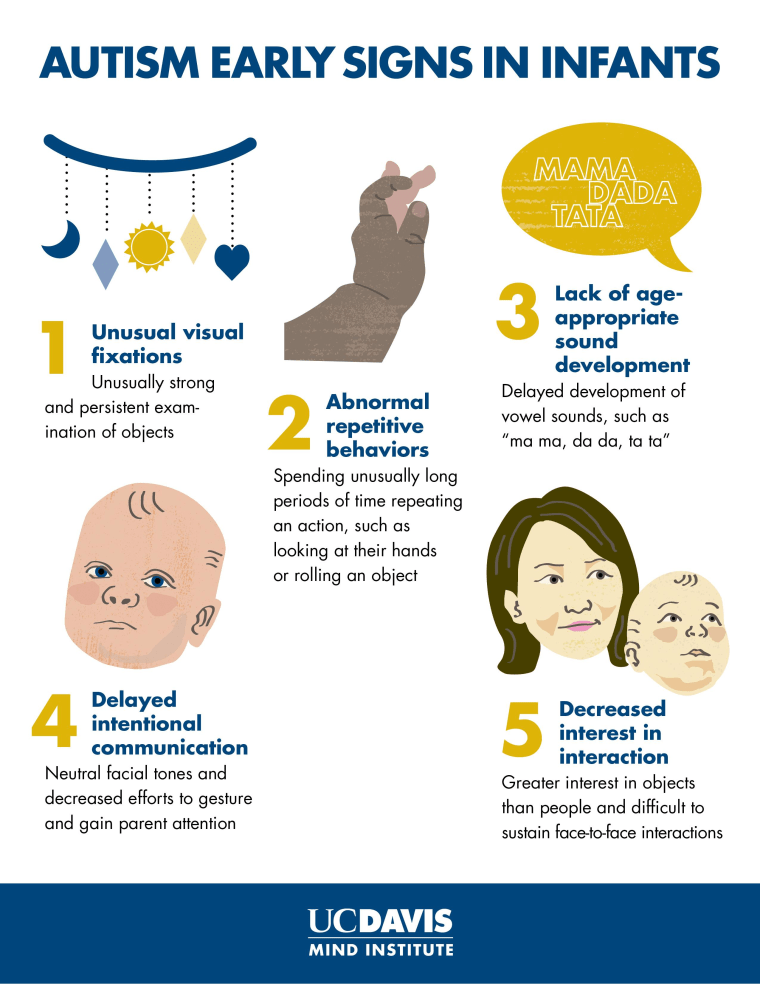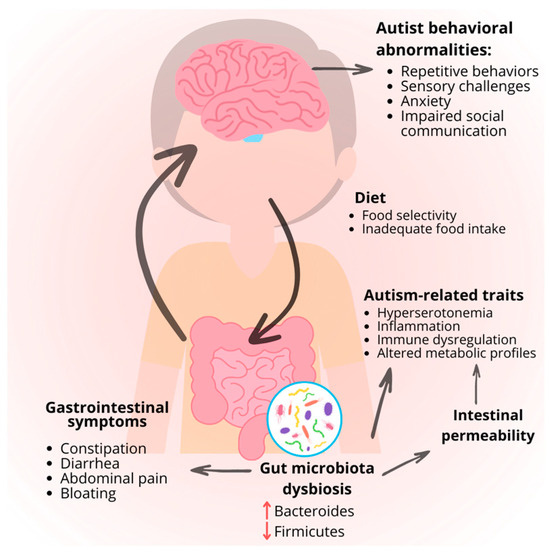Checking Out Effective Strategies for Supporting People With Behavior Autism
Supporting people with behavioral autism calls for a nuanced understanding of their special requirements. You'll find that personalized treatments, grounded in evidence-based methods, can make a considerable difference. By working together with families and experts, you can create a customized strategy that fosters interaction and development. What certain strategies can you carry out to guarantee these people thrive? Let's discover the effective methods that can boost their everyday experiences.
Understanding Behavior Autism: Trick Attributes and Obstacles
When you begin to recognize behavior autism, you'll see numerous crucial features and obstacles that specify the experience for people. Social interactions may be challenging; individuals might locate it difficult to check out social signs, leading to misunderstandings in relationships.
Additionally, sensory level of sensitivities are usual, creating pain in atmospheres with intense lights or loud sounds. These difficulties can lead to anxiety or aggravation, impacting day-to-day live. It's vital to acknowledge that each person is unique, and their experiences might vary. Comprehending these qualities allows you to come close to support with empathy, cultivating a favorable connection that can boost their health and motivate growth.
The Significance of Personalized Interventions
When it involves sustaining people with behavioral autism, individualized interventions are important. By developing tailored treatment plans that focus on specific strengths, you can significantly boost their advancement. Teaming up with support groups guarantees every person is straightened in giving the very best care feasible.
Customized Intervention Plans
Producing customized intervention plans is crucial for efficiently sustaining people with behavior autism, as each person's requirements, toughness, and obstacles differ considerably. By crafting these personalized plans, you can address particular habits and objectives, ensuring a more concentrated strategy. Beginning by collecting thorough details about the person, including their choices, sets off, and past experiences. Work together with therapists, caretakers, and instructors to recognize strategies that resonate with them. Regularly keep track of progress and readjust the strategy as needed, ensuring it remains efficient and appropriate. This flexibility not just promotes engagement but additionally advertises a sense of ownership and empowerment for the person. Inevitably, tailored treatment plans can greatly boost the high quality of support you provide, bring about more meaningful end results.
Private Toughness Analysis
A specific strengths evaluation is vital for creating customized treatments for people with behavioral autism. By concentrating on each individual's one-of-a-kind abilities, you can produce strategies that resonate with their rate of interests and abilities. This technique not just enhances engagement however additionally boosts self-esteem.
When you recognize strengths, like phenomenal memory or creative ability, you can tailor treatments that take advantage of these locations. This not just makes learning a lot more reliable but also fosters a feeling of success. Bear in mind, every person has unique capabilities; acknowledging them equips you to craft significant experiences.
Including these toughness right into daily regimens and healing methods can bring about boosted end results. Eventually, prioritizing strengths guarantees that treatments are not simply efficient however likewise enriching for the individual.
Collaborative Support Groups
Acknowledging specific staminas sets the stage for forming joint assistance teams that concentrate on customized interventions. By uniting experts, relative, and the people themselves, you produce a supportive network that customizes methods to satisfy particular needs. Each staff member adds unique insights, making sure an extensive method that resolves behavioral difficulties effectively.
This versatility is essential, as it assists every person involved remain lined up with the person's goals and preferences. In addition, engaging in this team-based method equips people with autism, advertising their self-advocacy and confidence.
Evidence-Based Communication Methods

When working with individuals on the autism spectrum, utilizing evidence-based interaction techniques can considerably boost their capacity to attach and share themselves. Making use of aesthetic assistances, like image timetables or interaction boards, aids make clear assumptions and cultivates freedom. Streamlining language and making use of concrete terms permits much better understanding, reducing irritation.
Integrating social tales can prepare people for numerous circumstances, showing them proper actions and habits. Motivating the use of assistive technology, such as speech-generating gadgets, encourages individuals to interact better. Additionally, employing consistent routines and predictable settings can supply a sense of safety, here making communication extra reliable.
Keep in mind to be client and provide time to refine your words. Engaging in active listening, where you mirror their ideas and sensations, can enhance your link. By executing these techniques, you'll produce a more encouraging communication ambience for individuals with autism.
Developing Helpful Environments
Developing supportive settings for individuals with behavior autism starts with carrying out organized routines that give predictability and safety. You'll also desire to create sensory-friendly spaces that deal with individual demands, decreasing frustrating stimuli. In addition, using favorable support methods can urge desired actions and promote a feeling of accomplishment.
Structured Routine Execution
Establishing an organized routine can substantially improve the atmosphere for individuals with behavior autism. By producing a consistent timetable, you supply predictability, which can decrease anxiousness and confusion. Start by damaging the day into convenient segments, including activities like meals, play, and quiet time. Use visual routines or timers to aid them understand what follows. Ensure to include possibilities for breaks, as these can aid them refocus and regroup. It is essential to be versatile; while regimens are useful, adjusting to adjustments in state of mind or circumstances is important. Motivate involvement in developing the regular, so they really feel a feeling of possession and control. A well-structured atmosphere promotes self-reliance and self-confidence, sustaining their total growth.
Sensory-Friendly Spaces Style

Favorable Support Strategies
When you integrate favorable reinforcement techniques right into your method, you can greatly boost the learning and behavioral end results for people with autism. Begin by identifying what encourages the private-- be it praise, symbols, or unique activities. You can additionally slowly increase the intricacy of jobs as individuals come to be more comfy, reinforcing their progression.
Collaborative Strategies: Collaborating With Specialists and households

Including relative in decision-making encourages them and enhances their capability to sustain their enjoyed ones. Specialists, consisting of therapists and educators, can provide beneficial sources and training that further assist families.
You should also appreciate each celebration's point of view, acknowledging that families know their child finest while experts bring specialized knowledge. By crafting personalized strategies with each other, you produce a customized technique that attends to one-of-a-kind demands. Autism Therapist. Eventually, this partnership not just benefits the specific with autism yet also strengthens the support network bordering them, making it much more efficient and cohesive
Integrating Social Skills Educating
Structure on the strong collaborations created between families and specialists, including social abilities training can considerably improve the assistance given to people with behavioral autism. This training aids you show crucial interaction skills, such as starting conversations, recognizing non-verbal hints, and responding suitably in social situations.
By making use of structured tasks, role-playing, and real-life circumstances, you produce opportunities for method in a safe environment. Motivate individuals to get involved in group settings where they can involve with peers, promoting discover this friendships and boosting their convenience in social contexts.
It's crucial to tailor the training per individual's one-of-a-kind staminas and challenges, guaranteeing they feel continue reading this positive and qualified. Routinely including comments from both specialists and family members can refine these approaches, making social skills training more efficient. Inevitably, you're empowering individuals with the devices they require to browse social interactions effectively and develop purposeful relationships.
Keeping An Eye On Progression and Adjusting Approaches
As you execute social skills training, it's vital to keep an eye on progression and change methods appropriately. Keep track of habits, keeping in mind obstacles and enhancements.
Engage the individual in representation, asking just how they really feel regarding their progress and what difficulties they face. This feedback is invaluable for customizing your strategy. If specific techniques aren't yielding outcomes, don't be reluctant to modify them.
Team up with various other caregivers or specialists for fresh viewpoints and understandings. By staying attentive and responsive, you develop an atmosphere that cultivates growth and advancement.
Often Asked Inquiries
What Are the Usual Misconceptions Concerning Behavioral Autism?
You may believe behavior autism only influences communication, but it incorporates much a lot more. Lots of think all individuals with autism act the exact same, overlooking their distinct qualities and capacities. It's vital to understand each person's distinctions.
Just How Can Technology Help in Sustaining Individuals With Behavioral Autism?
Innovation can boost communication, supplying devices like apps for social abilities and actions tracking. You can make use of virtual reality for immersive experiences, and wearable tools can monitor emotional states, assisting you sustain people properly.
What Duty Do Sensory Handling Issues Play in Behavioral Autism?
Sensory handling concerns can significantly affect actions. You might see that overwhelming sensory input causes stress and anxiety or meltdowns. Comprehending these challenges helps you create a much more supportive atmosphere for people experiencing sensory overload.
Are There Certain Dietary Suggestions for Individuals With Behavior Autism?
Yes, specific nutritional referrals can aid. You might consider a gluten-free or casein-free diet regimen, which some discover beneficial (Autism Spectrum Therapies). Always consult a healthcare specialist prior to making substantial modifications to ensure it's appropriate for you or your enjoyed ones
Exactly How Can Peers Be Informed to Support People With Behavioral Autism?
To enlighten peers, you can arrange workshops, produce informative products, and encourage seminars. Involving activities, like role-playing circumstances, assist them recognize difficulties faced by individuals, cultivating compassion and reliable support within the area.
Exploring Efficient Methods for Supporting People With Behavior Autism.
Creating tailored intervention strategies is important for properly supporting people with behavioral autism, as each person's demands, toughness, and difficulties differ significantly.A private strengths analysis is essential for creating individualized treatments for individuals with behavioral autism.To sustain people with behavior autism, designing sensory-friendly rooms is necessary, as it can greatly improve their convenience and emphasis.Collective techniques are important for sustaining individuals with behavior autism, as they foster a strong partnership in between experts and households.
Comments on “Managing transitions using Autism Behavioral Therapy tools”